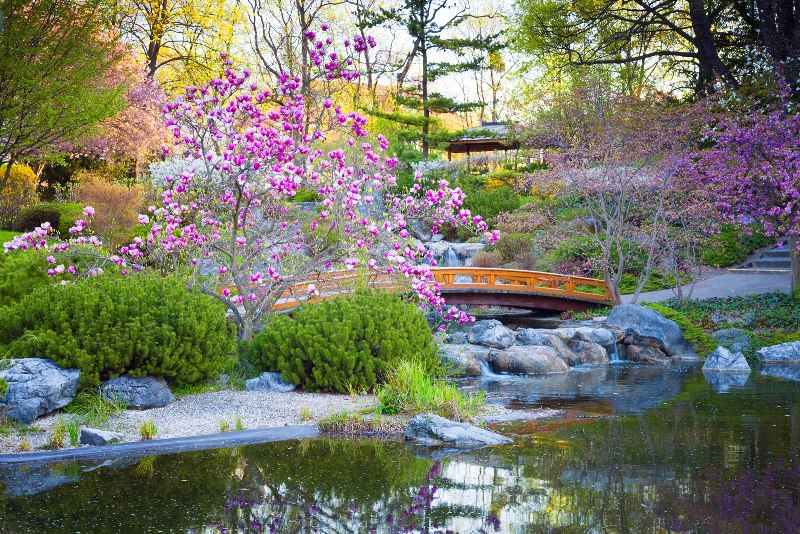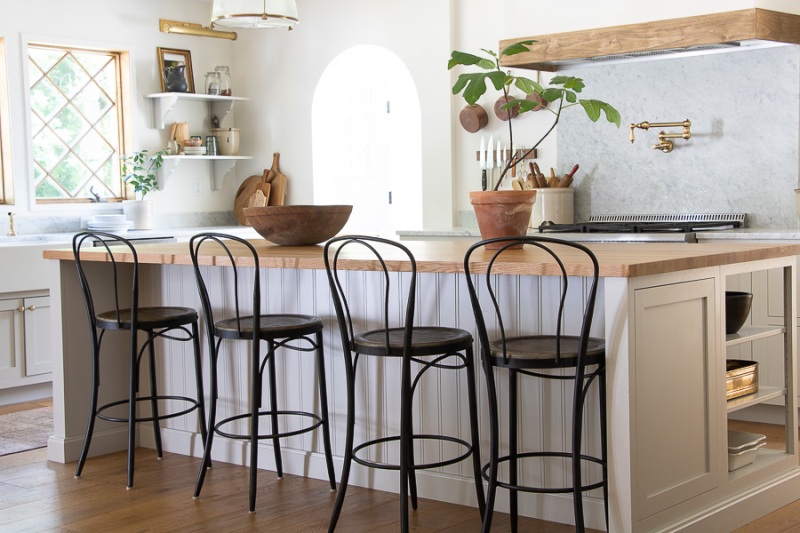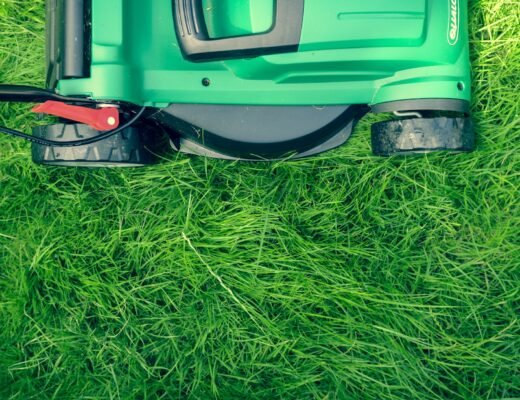A lot of Americans have a fascination with Japanese gardens. This comes as no surprise since Japanese aesthetics have risen to great popularity in the last decade or so. People love the simple, purposeful, and even spiritually rooted principles of Japanese design.
What most homeowners appreciate about Japanese gardens is how these spaces, with their much smaller size, artistically mimic the natural balance of a beautiful and vast environment. They look so calm and peaceful that being in one helps you feel freedom from stress.
Those, indeed, are the best points of a Japanese garden. However, according to landscapers and professionals in lawn care in Liberty Township, OH, creating such an outdoor sanctuary is not easy. There are unique design principles behind such a beautiful and peaceful space.
So if you are thinking of creating a Japanese garden for your property, it’s essential to know what these principles are first. Listed below are six:
1. It’s not about symmetry.
The idea of balance without symmetry may be confusing. However, expert Japanese garden landscapers say that the sense of balance created by such a garden is derived from the presence of various structural elements that create an accurate downsized depiction of a beautiful environment.
For example, in Zen gardens, the grass does not necessarily need to be the same species or height throughout the space. This is because it may be intended to look like a lush forest with different kinds of trees. Likewise, the different decorative rocks around do not need to be the same shapes or colors, so they can mimic islands.
Clearly, symmetry and uniformity are not the goals. Beauty and balance for Japanese Zen gardens are all about accurate representation.
2. It should reflect the changing seasons.
One of the reasons why sand is a vital component of a Zen garden is because it’s a customizable material. Sand makes it easy to depict the changes in nature that every season brings. You can draw different ripples on them to show how calm or turbulent waters get at the turnover of seasons.
Along with that, the color of sand provides the perfect background for other meaningful decorative elements in Zen gardens, such as the small stones to represent the seasonal movement of animals.
3. Turf does not need to be grass.
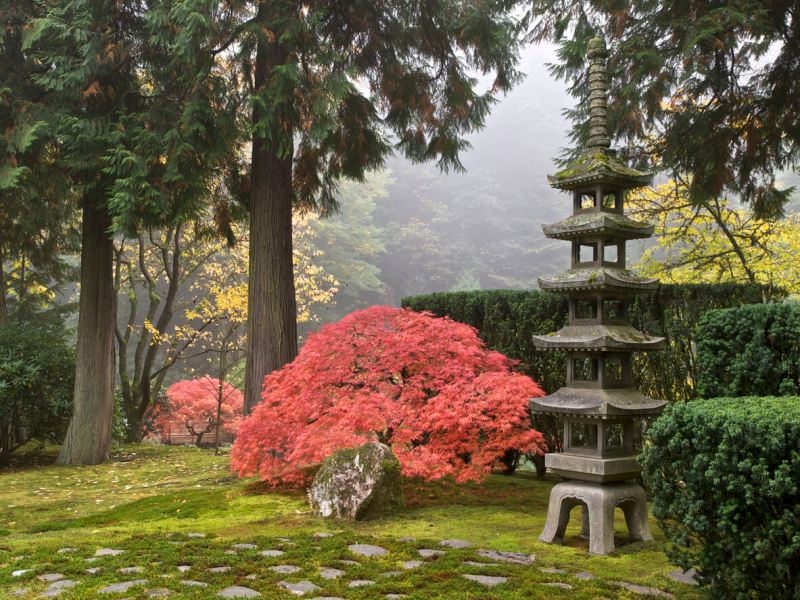
Although grass is usually the green element used in Zen gardens, you do not have to limit yourself to this option. Landscapers say that for such gardens, it’s more about the look than the kind of plants used. So, if it’s a struggle to grow grass on your property, explore more hardy and lower-maintenance options.
The Japanese prefer moss as a substitute for grass for their traditional gardens. Mosses are primitive terrestrial plants that do not have roots. They only have leaves and stems, which grow abundantly simply by catching moisture in the air.
You can also use Creeping Thyme, Portulaca, and Cortisan Mint, which are all low-maintenance and grow thick and lush better than grass.
4. It requires continuous learning.
Maintaining a Japanese Zen garden demands continuous learning since this garden’s purpose is mainly for style. Therefore, there are specialized skills to master in preserving the unique look of this property feature.
Lawn care, Mason, OH Zen gardening experts say, is more complicated because of the usual inclusion of a small man-made body of water (typically a pond), sand, rocks, and maybe bonsai plants. All of these components place more and different responsibilities for maintenance, and all these need to be done right.
You can only keep up with maintenance effectively by either having experts tend to your garden regularly, or you work to become skilled in Zen garden maintenance.
5. Regular maintenance is a must.
The thing about Japanese Zen gardens is that you cannot let them grow freely. Otherwise, they will cease to be the kind of gardens that they are. You need to trim, prune, and cut almost on a daily basis and in a way that preserves their natural appearance.
It really is a lot of work, but you can look excitedly look forward to the reward of having a standout outdoor space.
6. It’s always meaningful.
Finding meaning in a garden is not something that people always think about, but for the creation of a traditional Japanese garden, this is a must.
For instance, with tea gardens, the grass and plants surrounding the pathway are carefully chosen and placed. That’s because conjuring the feeling of being in a remote setting deep in the forest to get to a designated place for tea is essential for creating an escape from the usual clamors of life.
Those are the six most important principles to consider if your goal is to build a Japanese garden for your property.
Advantages of Having a Japanese Garden
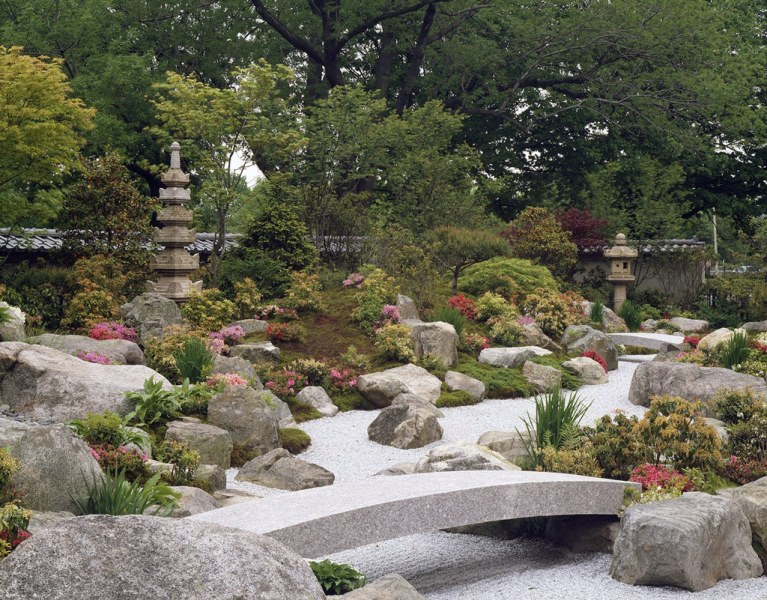
Aside from the unique appearance of a traditional Japanese garden, there are other advantages that you can enjoy from it:
a. It’s a garden that you can fit in any size of space.
Unlike other styles of gardens, Japanese-style gardens are much easier to create for any space. In fact, you can even create one that is as big as a table because it does not rely too much on plants. Plus, one of the main principles of Japanese gardens is downsizing, which is the primary motivation behind tending to bonsai plants, which Japanese gardens are known for.
b. It’s a relaxing place to be.
Since Japanese gardens always need a water element, they are usually more peaceful and relaxing. The sound of running water has a sense of steadiness to it, and it’s a non-threatening sound. According to studies, the sound of water signals the brain not to worry.
Thus, it’s comfortable to say that a Japanese garden can help promote one’s well-being.
c. It can develop a high regard for nature.
According to an expert on Japanese gardens, this kind of garden is the acknowledgment of humankind’s reliance on nature. In a sense, it represents both the joys and struggles of living, which is why people can’t help but develop a great respect for nature when they grow a Japanese garden.
All in all, creating this garden in your home is a great idea. Despite the work it entails, you can be sure that it will be an asset not just to your property, but your life as well.

